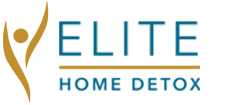
06 Feb What Are Gateway Drugs?
Understanding gateway drugs is important for preventing substance use disorders. By exploring what is a gateway drug, substances like alcohol, nicotine, and marijuana, and its effects, society can address the risks of early substance exposure, empowering communities to implement more effective interventions, shape better policies, and create healthier environments for those people that are most at risk.
Table of Contents:
Understanding what is a gateway drug is an important part of addressing substance use and all of its potential consequences. These substances are often viewed as the initial step that leads to the use of more harmful drugs. The term “gateway drug” originated in the mid-20th century during efforts to better understand the different patterns of substance use. At the time, researchers and public health advocates were observing that individuals often started with substances that are considered less harmful before progressing to more dangerous drugs. This observation laid the foundation for what is now known as the gateway drug hypothesis.
The history of the term goes back to studies from the 1970s and 1980s, which aimed to identify early risk factors for substance abuse. Initially, marijuana was frequently labeled as a gateway drug because of its perceived connection to the subsequent use of harder drugs like cocaine and heroin. Over time, the concept expanded to include other widely used substances, such as alcohol, nicotine, and even some prescription medications. Today, its main premise still remains as a significant influence in shaping different prevention strategies and public health policies.
Getting a better grasp of what is a gateway drug is important for public health because it informs prevention strategies and helps guide discussions around substance use and education. By understanding the pathways that lead people from one substance to another, we can better address the factors contributing to both substance misuse and addiction, and ultimately create a safer and healthier society.
In-home Rehabilitation
Begin your journey to recovery with Elite Home Detox's private in-home detox and addiction treatment services. Start your path to recovery in the comfort and privacy of your home with discreet and personalized care tailored for discerning individuals.
Book NowUnderstanding Gateway Drugs
The concept of gateway drugs suggests that certain substances which are often considered less harmful, can pave the way for the use of more addictive and dangerous drugs.
This concept emerged from studies that showed certain patterns in how individuals progress from using substances like alcohol or marijuana to harder drugs, such as heroin or cocaine. While the hypothesis has faced a great deal of criticism and debate, it remains a focal point in understanding substance use behaviors.
Commonly identified gateway drugs include substances like alcohol, nicotine, marijuana, prescription drugs, steroids, caffeine, and even sugar.

These substances are readily accessible for most people and are often perceived as harmless, which can increase their appeal, especially among young people. By looking into the different characteristics and specific effects of these substances, we can gain a better understanding of their role as potential gateways.
Examination of Common Gateway Drugs
Before looking into specific substances, it is important to understand why these drugs are categorized as gateways. Many are legal or socially acceptable, making them accessible to a wide group of different people. Their use often begins in social settings, where experimentation feels less risky. However, repeated use can lead to dependency and a higher likelihood of transitioning to stronger substances. By looking into these drugs in detail, we can try to gain a better understanding about their impact on individual choices and public health.
Alcohol
Alcohol is one of the most widely used gateway drugs and is deeply embedded in many cultures across the world. Its accessibility and social acceptance make it a common starting point for substance use. Among youth, alcohol is frequently associated with risk-taking behaviors, such as impaired driving or unprotected sex, which can lead to severe consequences. According to a study by the Centers for Disease Control and Prevention (CDC), over 47% of high school students report having tried alcohol at least once.
The effects of alcohol can greatly vary based on the amount that has been consumed, ranging from mild relaxation to severe impairment. Prolonged or excessive use can lead to liver damage, addiction, and mental health issues like depression and anxiety. Beyond individual health, alcohol misuse imposes significant economic burdens, costing the U.S. over $249 billion annually in healthcare expenses and lost productivity. Plus, alcohol’s role in contributing to risky behavior increases the likelihood of exposure to other substances, showing its importance as being considered a potential gateway drug.
Nicotine and Tobacco
Nicotine, found in cigarettes and vaping products, is considered another prevalent gateway drug. Traditional smoking rates have declined, but vaping has continued to grow in popularity, especially among teenagers. The appeal of flavored vaping products and the perception of e-cigarettes as a safer alternative have played a role in fueling this trend. However, nicotine profoundly impacts brain development, especially in young people, and can lead to addiction that may contribute to a transition to other substances.
The economic and health consequences of nicotine use are substantial. Smoking-related illnesses cost the U.S. more than $300 billion annually, including healthcare expenses and lost productivity. Withdrawal symptoms, like irritability and cravings, make quitting challenging, and many people relapse multiple times before achieving long-term cessation. Plus, research suggests that early nicotine exposure may increase a person’s susceptibility to other drug use, proving its place as a gateway drug.
Marijuana
Marijuana has a unique position in the conversation about gateway drugs because of its evolving legal status. In some regions, marijuana is legalized for medical or recreational use, reshaping how it is being perceived by the public. However, research is showing that early and frequent marijuana use may increase the likelihood of using other substances later in life.
The effects of marijuana include altered sensory perception, impaired coordination, and memory issues. Medical use can provide relief for conditions such as chronic pain or epilepsy, but recreational use can carry risks, particularly for young users. Economic factors, including the commercialization of marijuana, further influence its accessibility and potential to be considered what is a gateway drug. Plus, studies have shown a correlation between frequent marijuana use and subsequent experimentation with harder drugs, reinforcing many people’s concerns about its gateway drug potential.
Prescription Drugs
Prescription medications, such as opioids, sedatives, and stimulants, are most often used for legitimate medical purposes. However, misuse can lead to addiction and the escalation to illegal drug use. The opioid crisis in the United States proves the risks associated with these substances. According to the National Institute on Drug Abuse (NIDA), nearly 75% of heroin users started with prescription opioids.
Factors like overprescription, lack of education on proper use, and easy access contribute to the misuse of prescription drugs. Regulatory measures, such as monitoring programs and public awareness campaigns, aim to mitigate these risks, but the problem remains a significant public health challenge. Prescription drug misuse often represents a slippery slope toward more dangerous substances, making them important gateway drugs.
Steroids
Steroids, often used by athletes and bodybuilders to enhance performance or appearance, are yet another potential pathway to substance misuse. The psychological and physical dependence on steroids can lead people to want to experiment with other drugs in order to maintain or enhance their effects. Body image issues and societal pressures can amplify these risks even more.
The legal ramifications of steroid use, including bans from sports and criminal charges, add another layer of complexity. Education on the long-term health consequences, such as liver damage and hormonal imbalances, is important in addressing their use as gateway drugs. Plus, the psychological dependency created by steroids can lead people to look out for other substances to manage withdrawal symptoms or to boost their performance.
Caffeine
Caffeine is a surprising addition to the list of gateway drugs, given its ubiquity in coffee, tea, and energy drinks. While this substance is generally considered safe in moderation, caffeine dependence can develop, leading some individuals to look for even stronger stimulants. The psychological effects of caffeine, including increased alertness and mood elevation, can mimic the initial appeal of more potent substances.
The accessibility and normalization of caffeine use highlight the importance of understanding its potential role as what is a gateway drug. Its effects vary widely among different people, proving the need for a personalized approach to substance use education. Studies show that excessive caffeine consumption can alter brain chemistry, creating habits that may predispose individuals to experimenting with stronger substances.
Sugar
The inclusion of sugar in the discussion of gateway drugs stems from its impact on the brain’s reward system. Research suggests that sugar can trigger dopamine release, creating patterns of habitual behavior similar to those seen with drug addiction. Over time, this dependency may lead some people to look for stronger stimulants or other addictive substances.
The health consequences of excessive sugar consumption, such as obesity, diabetes, and heart disease, go far beyond just addiction. Industry influence and the widespread availability of sugary products complicate the efforts to address its role in substance use behaviors. The parallels between sugar addiction and substance addiction prove why sugar is increasingly recognized as a gateway drug.
The Scientific Debate
The discussion surrounding gateway drugs has garnered both support and criticism. Some people point to neurological evidence showing changes in brain reward systems and a statistical correlation in drug use progression. For example, studies reveal that individuals who use marijuana or nicotine are more likely to experiment with other substances. Neurological imaging has shown that early exposure to certain substances alters brain pathways, making people even more susceptible to addiction.
Critics, however, argue that correlation does not imply causation. Socioeconomic and psychological factors, such as peer pressure or underlying mental health issues, may better explain patterns of substance use. Environmental factors, such as family dynamics and community resources, also play a very big role. Understanding these small nuances is important for developing prevention strategies that actually work. The ongoing debate shows the need for comprehensive research to unravel the complex interplay between biology, environment, and behavior.

Societal and Modern Challenges
Modern challenges, such as the influence of social media and the emergence of new substances, complicate efforts to address gateway drugs. Social media platforms often glamorize drug use, which can go a long way toward shaping perceptions and behaviors, especially in young people. Viral trends, often shared among impressionable youth, normalize risky behaviors associated with substance use. Also, synthetic drugs and new delivery methods, such as vaping, are introducing new risks that have never been seen before. These modern substances often have unknown long-term effects, adding to the complexity of both prevention and intervention.
Economic disparities can make this issue even worse. Communities with limited access to education and healthcare resources are more vulnerable to the effects of gateway drugs. Tackling these challenges requires a holistic approach that considers both technological influences and socioeconomic factors.
Prevention and Intervention
Addressing the topic of what a gateway drug is requires a multifaceted approach. Educational strategies, including school-based programs and community initiatives, play a very important role in raising awareness about this issue. Programs that involve parents, teachers, and peers have proven to be very effective in reducing the appeal of substances that are labeled as gateway drugs.
Policies such as age restrictions and pricing strategies can also help to reduce accessibility, while early intervention programs and harm reduction approaches provide support for at-risk individuals. Harm reduction efforts, such as providing safe spaces and resources for quitting, have shown a great deal of promise in minimizing the consequences of substance use. Also, targeted campaigns that debunk myths surrounding the safety of substances like marijuana and vaping are very important.
Vulnerable Populations and Special Considerations
Certain groups, such as adolescents and individuals with mental health issues, are more vulnerable to the effects of gateway drugs. Adolescents, whose brains are still developing, are particularly susceptible to the addictive properties of substances like nicotine and marijuana. Mental health issues, such as anxiety and depression, often co-occur with substance use, creating a cycle that is difficult to break.
Cultural, social, and economic factors also influence substance use behaviors. Communities with limited access to mental health resources or education are at a much higher risk. Customized interventions that address these unique challenges are essential for proper prevention and support.
Conclusion
Understanding gateway drugs is important for shaping proper public health strategies. A balanced approach considers both the biological and societal factors that contribute to substance use. Education, regulation, and research are important factors in addressing the challenges that are posed by gateway drugs.
Prevention strategies must integrate community-specific solutions, addressing the unique needs of vulnerable populations. For example, school-based programs can be adapted to focus on peer influence, while public campaigns can highlight the risks of normalized substances like vaping. By giving people the power of accessible resources, society can create a more proactive stance against substance misuse.
Collaboration among stakeholders, including educators, healthcare providers, policymakers, and communities, is important for creating sustainable solutions. Continued research will help to deepen our understanding of substance use pathways and inform future interventions, allowing society to better respond to different challenges as they come about.
Long-term efforts should strive to reduce the stigma surrounding substance use disorders. Creating a culture of empathy and understanding will go a long way to help encourage people to get help without any fear of judgment. When combined with proper prevention and treatment measures, an approach such as this, can significantly minimize the risks posed by gateway drugs while promoting healthier and more resilient communities all at the same time.
Resources and Support
If you or someone you know needs help, these organizations and resources provide valuable assistance and information:
- Substance Abuse and Mental Health Services Administration (SAMHSA): A comprehensive resource for substance abuse support, offering a 24/7 helpline and treatment locator.
- National Institute on Drug Abuse (NIDA): Provides extensive research and educational materials on substance use and addiction.
- Alcoholics Anonymous (AA): A global support group offering peer-led meetings and resources for those struggling with alcohol dependency.
- National Suicide Prevention Lifeline: Offers crisis intervention and mental health support for individuals at risk.
- Local Community Support Groups: Many communities host meetings and resources that are tailored to specific substance use challenges.
In-home Rehabilitation
Elite Home Detox redefines addiction recovery with customized in-home detox and substance abuse treatment services designed for anyone seeking exceptional, discreet care. Our comprehensive approach includes not only detox but also addresses any co-occurring health conditions, addresses underlying drug use triggers, and equips you with sustainable coping strategies. Experience personalized treatment plans, continuous support, and concierge medical services, all within the privacy of your home.
Discover a new standard in addiction treatment with Elite Home Detox. Contact us to begin your recovery journey.
Book Now

